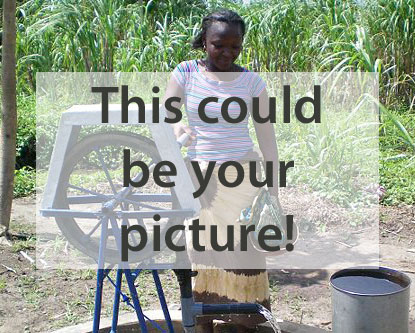Difference between revisions of "Pond farming"
| Line 1: | Line 1: | ||
| + | {{stub}} | ||
| + | |||
| + | __NOTOC__ | ||
{{stub}} | {{stub}} | ||
[[Image:Pond_farming_icon.png|right]] | [[Image:Pond_farming_icon.png|right]] | ||
| Line 7: | Line 10: | ||
[[Image:Pond farming.PNG|thumb|right|150px|Sketch diversified pond farming, Bolivia ]] | [[Image:Pond farming.PNG|thumb|right|150px|Sketch diversified pond farming, Bolivia ]] | ||
| − | Pond farming is now promoted elsewhere, following successful experiences in Bolivia. As ponds and pond farming become more widely known, they are becoming more accepted. | + | ==History and social context== |
| + | Pond farming is now promoted elsewhere, following successful experiences in Bolivia. As ponds and pond farming become more widely known, they are becoming more accepted. | ||
| + | |||
| + | ==Suitable conditions == | ||
| Line 18: | Line 24: | ||
}} | }} | ||
| − | == | + | ==Technical specification== |
| + | |||
| + | ====Operation==== | ||
| + | |||
| + | ====Maintenance==== | ||
| + | |||
| + | ====Manufacturing==== | ||
| + | Building the pond takes an average of 14 man days. | ||
| + | |||
| + | ====Estimated Lifespan==== | ||
| + | ==Cost== | ||
* Material: pond 1,000 m: US$ 200 - 1,600 | * Material: pond 1,000 m: US$ 200 - 1,600 | ||
| − | |||
| − | + | ==Country experiences== | |
| + | |||
| + | ==Manuals== | ||
| + | |||
| + | ==Movies== | ||
| − | == External | + | ==External Links== |
* [http://www.snvworld.org www.snvworld.org] | * [http://www.snvworld.org www.snvworld.org] | ||
| + | |||
| + | ==References== | ||
| + | |||
| + | {{Joinus}} | ||
Revision as of 16:34, 27 July 2009
| |
| |
The first farm ponds in Bolivia date back to the 1980s, when ‘k’hochas’ (small water reservoirs that the farmers had dug) were enlarged with the help of heavy machinery. Rainwater is collected in these farm ponds, taking advantage of the runoff from the higher slopes or water from a nearby watercourse during periods of rain. The pond water is used for irrigation and keeping fish.
Although different local organisations had different working methodologies and pond designs, there was an exchange of ideas between them, one of which was to encourage farmers to make a 10 to 30% contribution towards their pond construction. Some organisations chose to build ponds for collective use, but - as these often encountered problems of ownership and maintenance - individual ponds proved to be a better option.
History and social context
Pond farming is now promoted elsewhere, following successful experiences in Bolivia. As ponds and pond farming become more widely known, they are becoming more accepted.
Suitable conditions
| Advantages | Disadvantages/limitations |
|---|---|
| - XXX - XXX |
- XXX - XXX |
Technical specification
Operation
Maintenance
Manufacturing
Building the pond takes an average of 14 man days.
Estimated Lifespan
Cost
- Material: pond 1,000 m: US$ 200 - 1,600
Country experiences
Manuals
Movies
External Links
References

|

